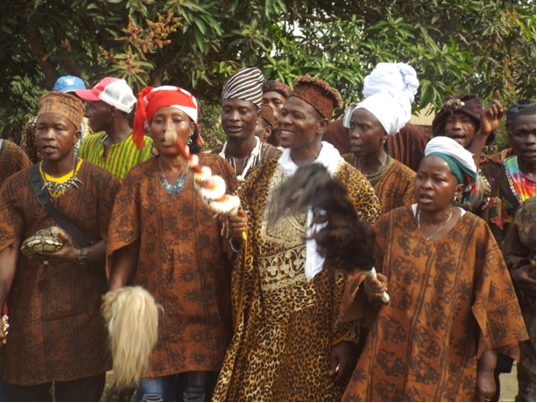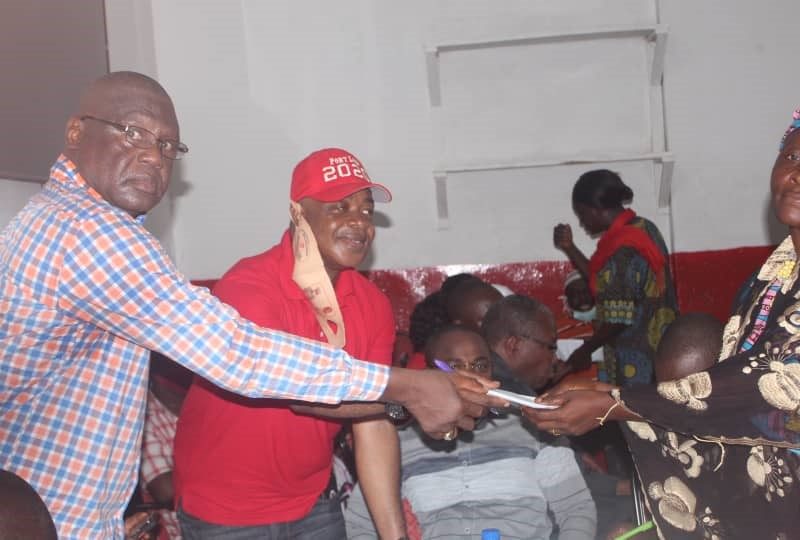African Minerals Tonkolili Iron Ore Project making way for Sierra Leone’s development
African Minerals Limited (AML) has been exploring the Tonkolili deposit in the Sula Mountain range in Sierra Leone for the last seven years and in 2009 confirmed the presence of a world-class magnetite iron ore deposit. The mine is located approximately 200km East of Freetown and requires extensive pit to port infrastructure to develop the project.
The Project Benefits includes: employment generation both during construction and operation, large scale investment in Sierra Leone, government revenues, project wide training initiatives, community investment and development and contribution to local and regional development
Introduction
The Tonkolili Iron Ore Project consists of mining and processing operations that will produce concentrate for export at a rate of about 45 years at these production rates, and there is opportunity for increased production subject to further exploration and feasibility studies.
Mining will use standard techniques including blasting and open cast excavation. Ore will be crushed to a fine silt texture and concentrated in a series of process plants located near the mine. The mine and process plant will require large quantities of power and water, generating considerable amounts of surplus material or overburden. Concentrate will be transported over 200km to a new, purpose-built port at Tagrin Point, near the mouth of the Sierra Leone River Estuary. Newly developed rail infrastructure will be required to link Tonkolili with Tagrin Point. The proposed port facility will be a deep water port comprising a causeway, trestle and berths located 700-800m off-shore.
This will involve extraction of the iron ore and be supported by associated infrastructure including a raw water storage facility, processing equipment, disposal of overburden and a tailings facility. Other ancillary arrangements include accommodation, camps and services and an airstrip.
A standard gauge heavy haul rail line will be built following a route close to the existing road network from Tonkolili to Makeni and through to Rogbere Junction near Lunsar. From there it will follow the Pepel rail alignment to Lungi Lol. It will then branch off and run close to the Port Loko-Lungi Road and down to Tagrin Point.
A new deepwater port will be constructed to the West of the Tagrin Ferry Terminal and a service port will be built to the East of Tagrin Point. A range of material handling facilities will be established in the main port including: stockpiles of ore, rail car dumper unloading and ship loading facility with jetty, docking berths and conveyors
The secondary port will house a fuel depot, container terminal, power generation and support services. Offices, accommodation and road infrastructure will also be developed in this area.
AML has signed a 99 year lease agreement with the Government of Sierra Leone to reconstruct, manage and operate Pepel Port and the Pepel – Marampa Railway. AML is working towards initially mining hematite (another type of iron ore) that overlies the Tonkolili magnetite deposits and exporting this product via Pepel Port. A dedicated haul road (approximately 120km in length) will be built from the mine site to a railhead near Lunsar and the existing railway line refurbished between Marampa and Pepel. These works form what is referred to as the Early Cash Flow (ECF) project and forms the first phase of the Tonkolili Project as phase two, the magnetite project, is built.
AML is undertaking an Environmental, Social, & Health Impact Assessment (ESHIA) for the project in line with Sierra Leone requirements and international best practice. As part of the process AML has commenced stakeholder identification and consultations. Several baseline surveys have commenced and a comprehensive range of surveys will be completed, prior to identifying potential effects and mitigation associated with the project. On completion of the ESHIA, a statutory review period will be publicized during which stakeholders can comment. Once SLEPA is satisfied that the study has addressed project impacts adequately, a license will be issued.
Stay with Sierra Express Media, for your trusted place in news!
© 2010, https:. All rights reserved.











alpha kamara
/
I need job in security
19th August 2010Joseph Sesay
/
Dear ESHIA Consultants,
2nd August 2010Please as a sierra leonean leaving in china i am keen know some of the following,(1)What will happen to the tailings and over burden that are contaminated with heavy metals like Cadmium, chromium, lead and more as disposal is just moving the problems from one place to another? (2) How will contamination of agricultural fields, water bodies ,plants and animals be avoided or minimize as they are sources of heavy metal toxicity to man? (3) How will the pollution caused by blasting and other mining activities be controlled and remediated? (4)What strategies will be put in place to salvage the health hazards associated with this mining activities within the community levels?(5) How will fuel spillage and disposal of run out batteries be handled to reduce heavy metal contamination in the soil, water and air?I hope and pray that the impact assessment will consider some of this things and many more as the consequences of exposing our people to health hazards due to exposure to heavy metal contamination will be serious.
Joseph P.R.China